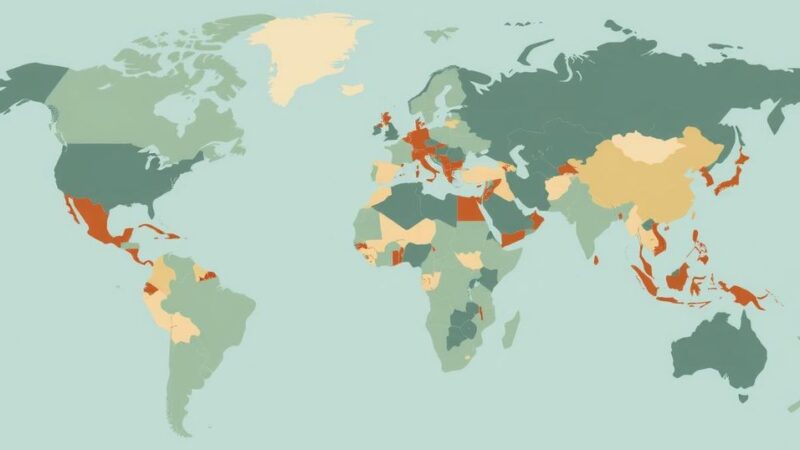A 6.1-magnitude earthquake struck Chile on January 2, occurring at a depth of 99 kilometers. This followed a series of earthquakes in California and Alaska, highlighting ongoing seismic activity across different regions, with magnitudes ranging from 3.0 to 6.7.
On January 2, a 6.1-magnitude earthquake occurred in Chile, as reported by the United States Geological Survey (USGS). The seismic event was located near Calama at a significant depth of 99 kilometers (approximately 61.5 miles). At the time of the report, 25 individuals had confirmed feeling the quake. Previously, on January 1, California experienced a 4.7-magnitude earthquake centered in Cobb, which occurred at a shallow depth of 1.1 kilometers (about 0.7 miles). This followed a 3.3-magnitude earthquake in Alaska on December 30, with its epicenter located in Nikolski at a depth of 39.5 kilometers (around 25 miles).
The sequence of seismic activities continued with an earthquake near Fort Bidwell, California, also registering 3.3-magnitude on December 30, occurring at a depth of 3.4 kilometers (approximately 2.1 miles). Furthermore, a larger 6.7-magnitude earthquake struck the Kuril Islands on December 27, situated at a depth of 162.6 kilometers (around 101 miles). This event was preceded by a 3.6-magnitude earthquake in McCarthy, Alaska on December 26, which had a depth of 8.1 kilometers (approximately five miles). Notably, the tremors in Alaska were closely following a lesser quake of 3.0-magnitude in Clayton, California on December 25, happening at a depth of 13.2 kilometers (around 8.2 miles). Finally, these seismic occurrences began significantly with a 5.9-magnitude earthquake in Guisa, Cuba, noted on December 23 at a depth of 22.2 kilometers (around 13.8 miles).
Earthquakes are natural phenomena resulting from the movement of tectonic plates beneath the Earth’s surface. The recent string of earthquakes reported in various locations, including Chile, California, and Alaska, illustrates the ongoing seismic activity experienced around the world. Seismologists use the Richter scale to categorize the magnitude of these events, offering insights into their potential impact on surrounding communities. Understanding the depth and location of an earthquake can help assess its severity and inform precautionary measures.
In conclusion, the recent seismic events spanning multiple locations, including a significant 6.1-magnitude earthquake in Chile, emphasize the persistent and unpredictable nature of earthquake activities globally. Each event, ranging from 5.9 to 6.7 in magnitude, contributes to a broader understanding of tectonic dynamics, underscoring the necessity for preparedness in earthquake-prone regions.
Original Source: mixgulfcoast.iheart.com






